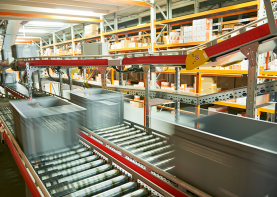Technology focus
Why a Strong Data Foundation is a Must in AI for Manufacturing
To truly scale AI for manufacturing, the foundational step is to build a unified and accessible data infrastructure. This means meticulously bringing together data from various systems and formats, dismantling departmental and technological silos, and ensuring consistent data quality across all sources.
Read moreKnow Your Network Before You Set Up Your Automated Warehouse System
Before any advanced automated warehouse systems can deliver on their promise, a critical prerequisite must be in place: advanced connectivity. This foundational layer, a robust and reliable network infrastructure, is what enables systems to communicate seamlessly. Learn more in this blog post.
Read moreImprove Your Warehouse’s Efficiency with Secure Connections
Your warehouse’s intricate dance of logistics and efficiency hinges entirely on a robust and resilient network. What happens when this critical foundation falters? Our parent company, Belden, has noted 6 steps you can take in advance to protect your warehouse’s efficiency.
Read moreYour Customized Path to an Automated Warehouse
Whether you're exploring a new automation system or upgrading your existing network, our parent company Belden’s blog post offers five design tips to help you build a smarter, more resilient warehouse.
Read moreHow the ONE Metric Helps You Evaluate Your Network’s Effectiveness
Networks are as critical to operations as equipment is, and impact plant productivity and automation. Historically, though, there hasn’t been a simple way to track their effectiveness. That has changed with the ONE metric (overall network effectiveness).
Read moreNavigating Wireless Deployment in Automotive Applications
Wireless connectivity has helped transform automotive plants, but there are considerations to keep in mind for deployment. Belden has identified four challenges of wireless deployment in automotive plants – find out how to overcome these potential issues.
Read more






